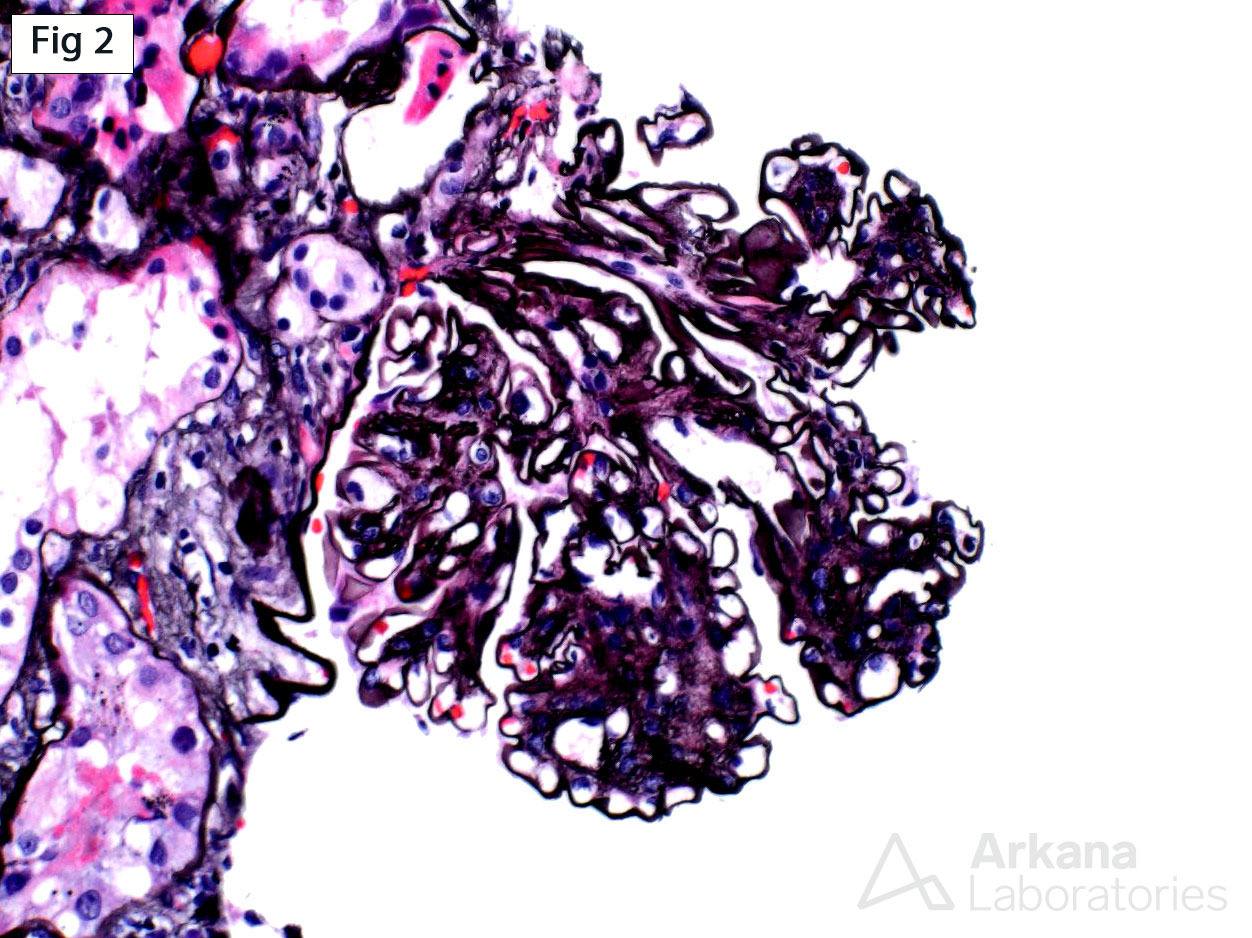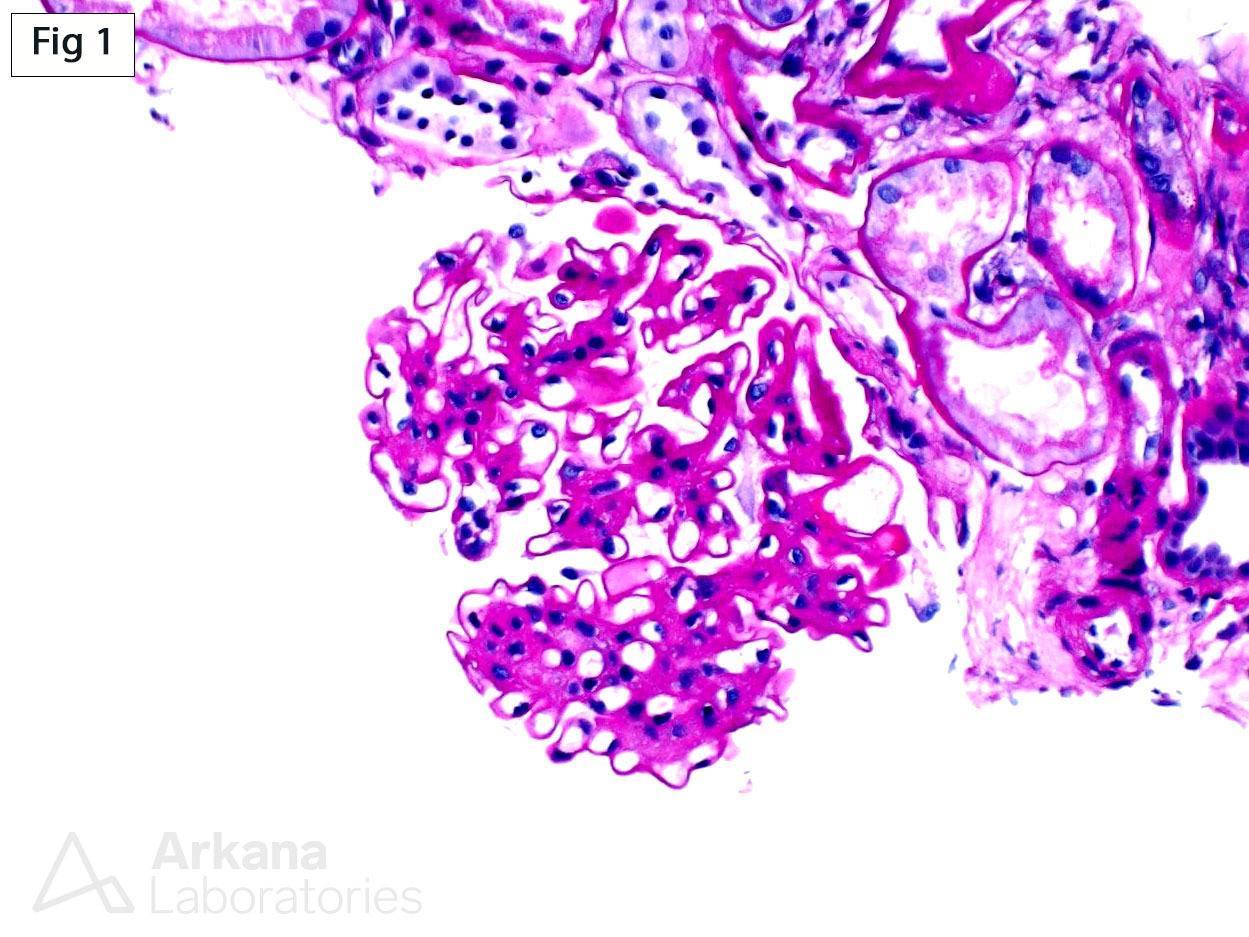A renal biopsy was performed on this 52-year-old male with a history of hypertension and heavy tobacco use, who is being worked up for nephrotic range proteinuria and increased creatinine. The glomeruli (Fig 1 and 2) show nodular mesangial matrix expansion without definitive proliferation, necrosis or crescents. Focal areas of segmental glomerulosclerosis are present. There is no evidence of immune complex or monoclonal immunoglobulin deposition by immunofluorescence or electron microscopy. Of note, electron microscopy does show global thickening of glomerular basement membranes (not shown). While non-specific, the most common cause of nodular glomerulosclerosis in the United States is diabetes mellitus/glucose intolerance disorders. Given the absence of a clinical history of such disorders in this patient, the glomerular findings likely represent smoking-related glomerulopathy. This entity has been shown to have morphologic changes almost identical to those seen in diabetes mellitus (see references).

References:
1- Markowitz GS, Lin J, Valeri AM, et al. Idiopathic nodular glomerulosclerosis is a distinct clinicopathologic entity linked to hypertension and smoking. Hum Pathol 2002; 33: 826-835.
2- Salvatore SP, Troxell ML, Hecox D, et al. Smoking-related glomerulopathy: expanding the morphologic spectrum. Am J Nephrol 2015; 41: 66-72.
Quick note: This post is to be used for informational purposes only and does not constitute medical or health advice. Each person should consult their own doctor with respect to matters referenced. Arkana Laboratories assumes no liability for actions taken in reliance upon the information contained herein.



